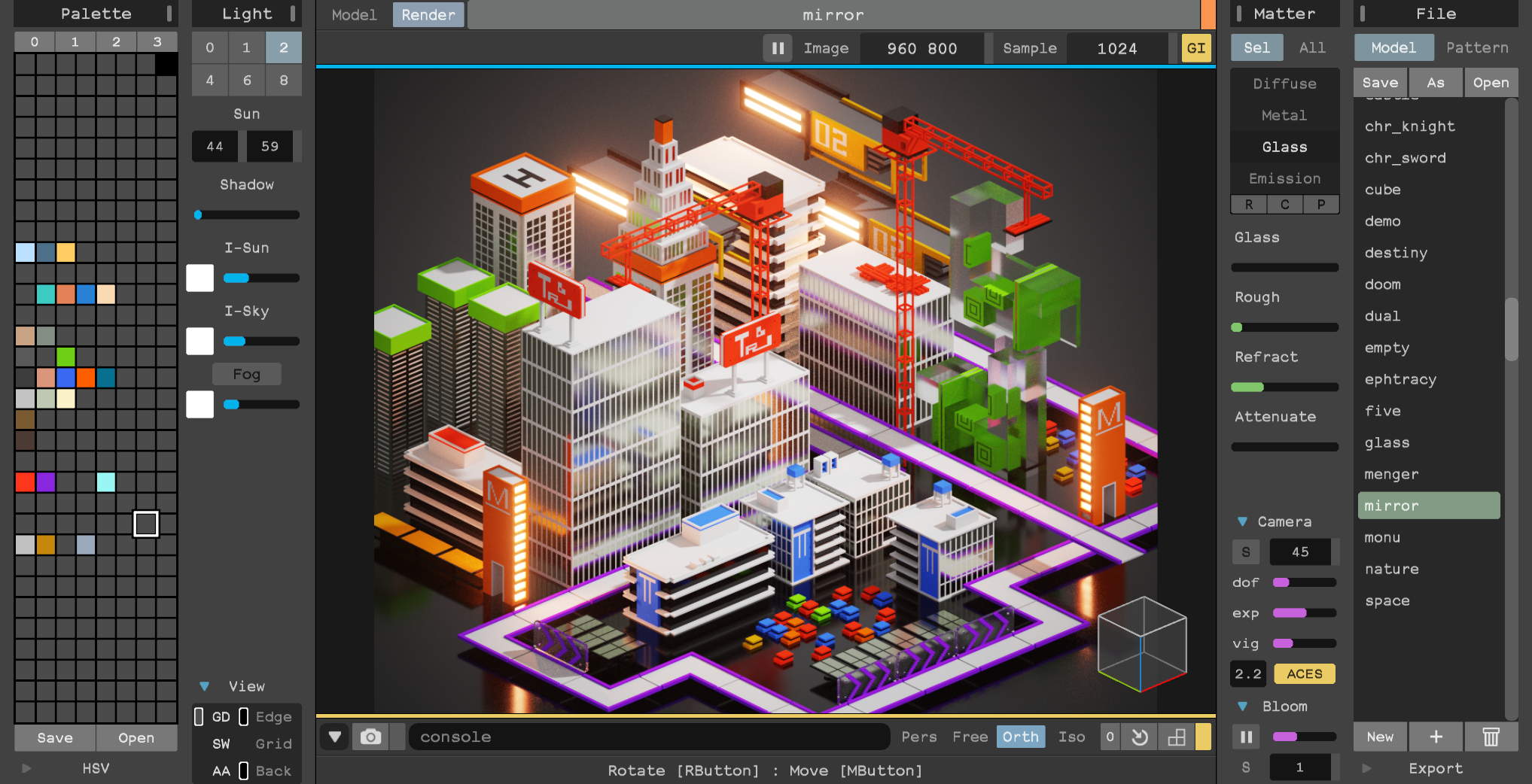Voxel based Interactive Modeling and Path Tracing Rendering
This is my personal five-year project (2012-2017). It pursues a unified graphics system to represent geometry, texture, material and light sources all in the form of voxels for interactive modeling and path tracing rendering.
Thanks to the great support from the community, lots of artists, developers and researchers help me examine the robustness of the algorithms, exploit potentials in various area, reveal future research directions to push the system evolve, and also, make voxel become a popolar and fantastic art form beyond imagination.
The related software is free to use for any project without the need of commercial licence. You can find more details at its Home Page.
Below are some highlights of this system:
Model Editor
- Constructive Solid Geometry (CSG) Modeling : construct complex model by Boolean operations on basic primitives, without the need of explicitly manipulating mesh topology and texture mapping.
- Push/Pull : extrude connected surface of model by simple pushing and pulling.
- Transform : translate, rotate, flip, dilation/erosion, floodfill, and symmetric transform.
- Voxelization : scan conversion from polygonal mesh to binary volume
- Voxel Shader : support GLSL based procedurely generation of volume, such as cellular automata and fractal
Scene Editor
- Scene Graph Editing : trasnform, group, instance objects in hierarchy
Path Tracing Renderer
- Volume Rendering : up to 512^3 dense volume, or 2048^3 sparse volume (in another standalone program).
- Progressive Rendering : instant feedback and smooth transition to modification of rendering parameters.
- Monte Carlo (MC) Stochastic Sampling : multiple light bounces, including diffuse, reflection, refraction, and scatter rays
- Physycally based Microfacet BRDF : voxels can be assigned with various materials, such as diffuse, metallic (GGX), transparent, emissive material. Importance sampling is applied to reduce variance.
- MIS Area Lighting : each voxel with emissive material is treated as an area light source in the scene. multiple importance sampling (MIS) is applied to reduce variance.
- Participating Media : first-order scattering to create fog and Tyndal effect (light shaft). Equi-angular importance sampling is applied to reduce variance of area lighting through participating media.
- Camera Parameters : such as orthogonal/isometric/perspective/stereographics projection, focus of depth of field, aperture size, exposure, vignette, ACES tone mapping, gamma, blooming/bokeh effect, etc.
- Voxel Shape : render voxels in other primitive forms, such as Lego, sphere, cylinder, rounded edges, or Marching Cubes.
Participants: Wei Li


